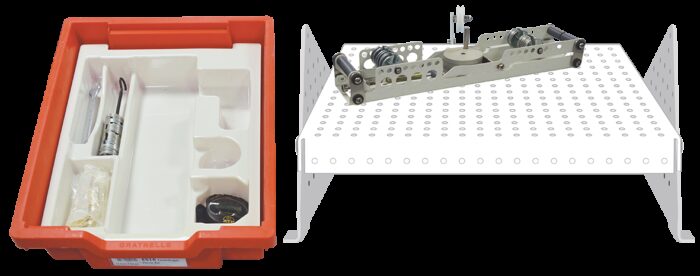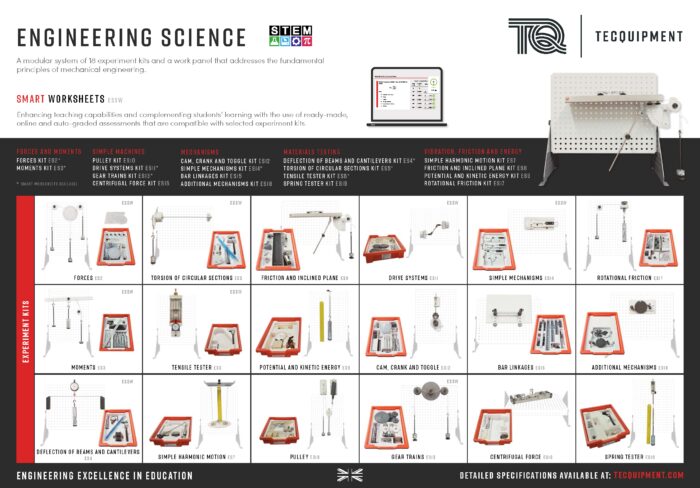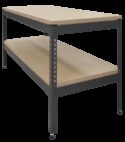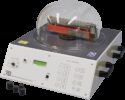Experiment
ES16
CENTRIFUGAL FORCE KIT
Demonstrates the relationship between centrifugal force, radius and velocity of rotating masses.
If you have any questions or you'd like to discuss a product, please call us.
+44 1159 722 611CENTRIFUGAL FORCE KIT
This versatile kit is part of a series that allows many experiments using different arrangements of their parts. Students, teachers or lecturers fit the parts of the kit to the Work Panel (ES1) (supplied separately) to study or show an engineering science topic.
This kit includes a manually rotated frame with a lowfriction cantilever linkage. The frame has mounting positions for adjustable masses and a spring that applies a fixed frictional force value to a rotating drum. The range of mounting positions and masses allows many variations of the experiment to help students understand the relationships between the variables of speed, mass and radial position.
Students fit the chosen masses to one side of the frame and an equal counterbalance to the opposite side of the frame. They rotate the assembly which will overcome the spring frictional force at a given speed, working as centrifugal clutch that regulates its own speed. The frame has a durable ‘clicking’ tab that students use with a stopwatch (supplied) to measure the speed. They use their measurements to calculate the forces due to the rotating masses and compare them with the opposing force from the spring.
The kit introduces students to key engineering terms such as centrifugal and centripetal force, while explaining the fictitious term ‘centrifugal’ force and its accepted use. It also shows the use of ‘radians’ in rotational velocity measurement.
TecQuipment supplies digital versions of all the worksheets, guidance notes and lecturer notes (with answers) needed for typical experiments with each kit. The selection of parts in the kits and the choice of fixing points on the Work Panel means that teachers or lecturers may extend the experiments to an even greater range.
Learning outcomes
- Relationship between centripetal force, radius and velocity of different rotating masses








